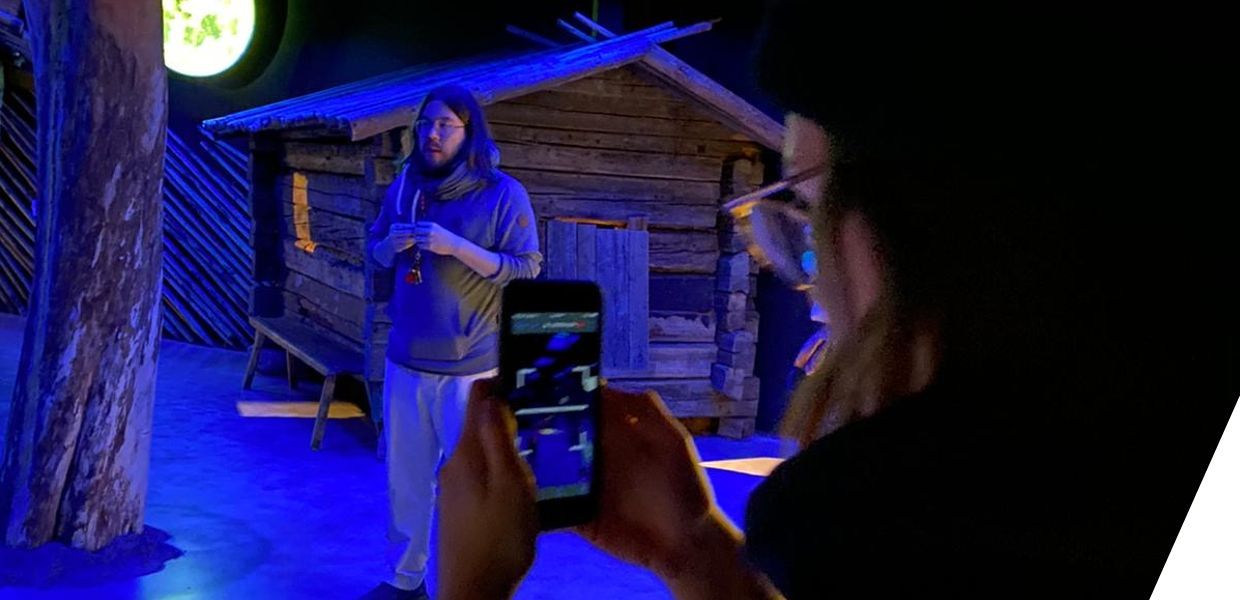‘All the world’s a stage’ - proclaimed the British poet and playwright William Shakespeare over 400 years ago, implying that everyday human life resembles a stage play. Often thought of as just a throwaway line, the famous quote encompasses an intriguing thought. What if we really did perceive the world as a stage and the people in it as actors in a play? What would this mean for museums and museum visitors?
This was the question partners of the Erasmus+ funded DREAM - Digital Reality and Educational Activities in Museums project asked themselves when they started collaborating in early 2021. Seven project partners from four European countries wanted to create a methodology for museum education that would allow for more engaging experiences and new forms of storytelling to be utilised by teachers and school groups. To achieve this, we would exploit practices commonly used in theater and cinema productions as well as Augmented Reality (AR) technology.
DREAM was a strategic partnership and a collaboration of the M9 District , Stati Generali dell’Innovazione, Center for Technical Culture Rijeka, Maritime and Historical Museum of the Croatian Littoral Rijeka, Mapa das Ideias, Camara Municipal de Oeiras and The Finnish Postal Museum.
The stage is set
The use of drama is a common tool in museum education. With DREAM, we wanted to develop a concept that not only uses drama as a narrative device for learning, but also lets the performer plan out detailed, consistent and refined scenes and to build sets within a museum exhibition.
From the start this presented the team with problems to solve. For example, the use of physical sets and set pieces was not an option, as exhibition spaces tend to have spatial limitations. Most of the physical objects in museums are also out of reach as they are either in a showcase cabinet or hidden from the public as part of museum collections. Relevant objects can also be spread across multiple museum collections across Europe, and since they are physical objects, it is practically impossible to constantly transfer them from one part of the continent to another.
The solution? Digital tools and technology.
The big questions of the DREAM project included: could AR technology be used to create digital sets and set pieces to support the actor and the performance as well as to change the physical exhibition in surprising and engaging ways? Would it help to break the limitations of physical exhibition spaces and further open museum collections, not just locally, but internationally, in a meaningful way? And most importantly, could a drama-based methodology combined with digital tools allow for more pervasive, accessible and fun learning experiences in museums? While the eventual answer to all these questions would turn out to be yes, the outcomes of the project surprised us all.
AR enhanced narratives for learning
From the onset, the DREAM methodology was based on the idea of including teachers in the process of developing new narratives and creating dramatised and engaging DREAM performances for students. This means that the role of a director, actor or a scenographer is not reserved only for the museum professionals but is also accessible for teachers. The benefit is that the teachers are able to create performances to be acted out in a museum that directly supports their teaching in the classroom. Pupils can also take part in the performance or create AR elements, for example drawings, sounds or videos, that the AR technology will bring to life during the DREAM performance.
To achieve all this, various elements had to be crafted during the project. The most important part was the DREAM methodology itself, which details a practical pathway to organise, implement and sustain a collaborative practice between schools and museums, with instructions for preparing and performing DREAM plays and using the digital tools provided by the project. The methodology is compiled into a guidebook that is available for free and can be implemented in a multitude of museums with ease.
To host the digital objects that can be used as the AR elements during the performances, a digital platform was created. The DREAM platform acts as a repository of cultural open educational resources (OERs) and forms the foundation for contemporary and future DREAM performances. During the project, each partner provided content for the platform and as such, it hosts a number of digital objects from museum collections across Europe. The platform makes it possible to use or mix digital content from other museums to support locally organized DREAM performances, so it is a collaborative, ever growing, Pan-European repository of cultural OERs.
In addition, a 40 hour long combined course was created to guide teachers and museum educators on their journey to create DREAM performances. 45 schools and 900 students across Europe were involved in testing the DREAM methodology and in creating the first AR enhanced DREAM performances. As a result, European teachers and schools created and performed over 40 DREAM performances, which in turn can be used as templates for future adaptations of the methodology.
Digital learning is not the future, it is here already
Feedback from teachers participating in the project proved that there is a demand for educational activities that help students to engage with learning through creative activities and digital technology. Being able to plan, create and customise your own museum experience was met with enthusiasm from both the teachers and the students as well as the staff of the museums. DREAM showed that while technology-based education does present challenges, they can be overcome with support and collaboration between schools and museums. DREAM may not have turned all the world into a stage, but it succeeded in doing that for museums.
The DREAM methodology, combined course and all other materials are available for free for everyone to use from the project website, or for more information contact me (Olli Nordling) at olli.nordling@postimuseo.fi.


